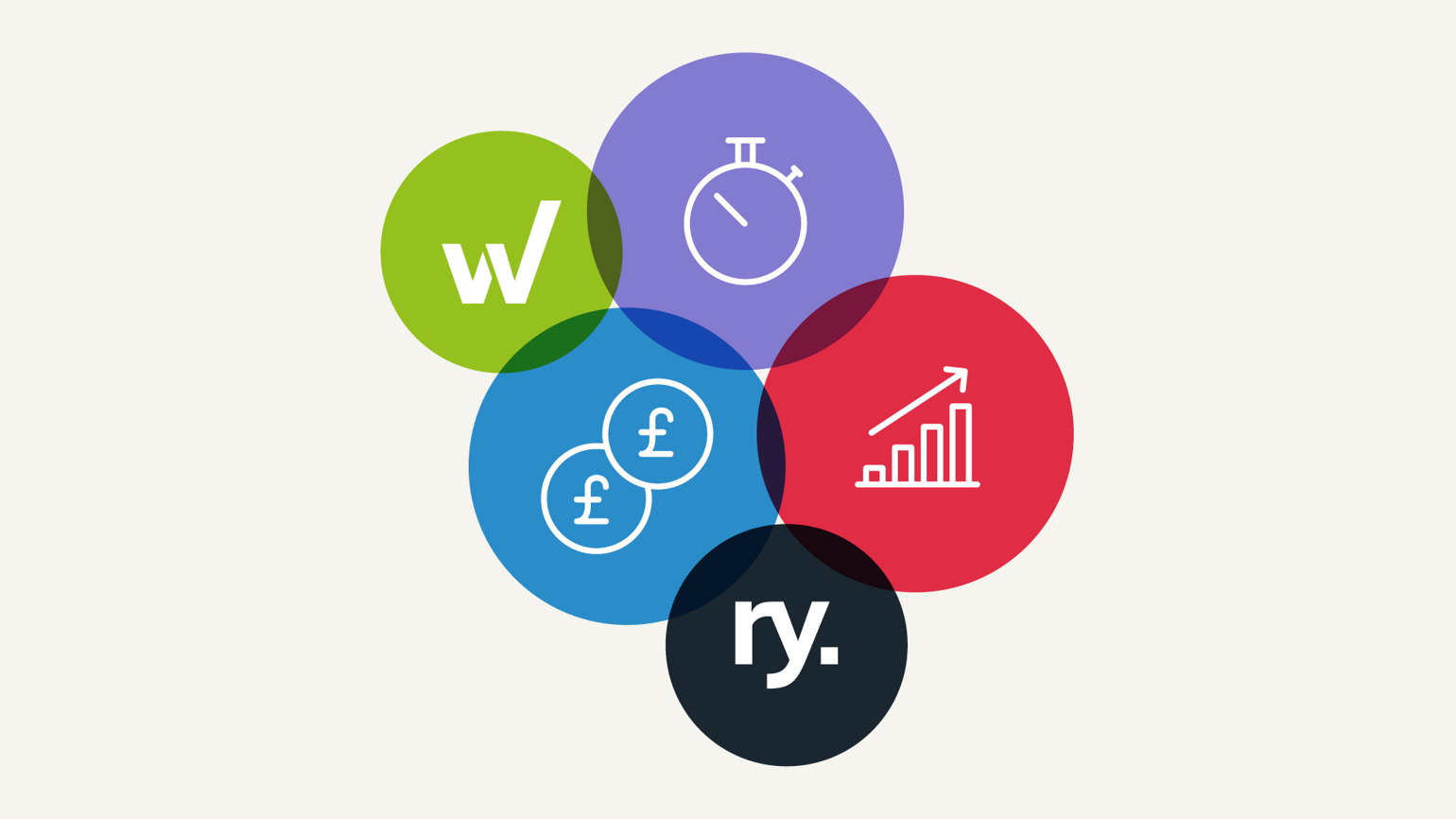Return to journal
Maximising Efficiency & Savings with Workiva
Dean Radley, reporting director, explores how savings delivered by Workiva can free you and your team up to do what you do best – and supercharge your reporting

Long hours. Manual data management. Version control nightmares. Constant compliance headaches. These are just a few of the pain-points that can go hand-in-hand with annual reporting projects. Every tweak seems to pull a thread, and every correction introduces risk, challenging annual reporting efficiency.
Experienced corporate reporting hands (we’ve been doing this for the better part of 40 years, for example) are used to navigating all this, shrinking complexity and maximising efficiency. But Workiva, a cloud-based platform designed to streamline reporting process and boost collaboration, makes a huge difference. Crucially, when used effectively, over the medium to long term it can help reduce reporting time and running costs of by up to thirty per cent.
How? Well, with real-time collaboration, automated data integration and error reduction through linked data systems, teams no longer have to drown in spreadsheets or manual processes. It cuts down the need for last-minute firefighting and makes sure your reports are accurate, consistent, and compliant.
Reporters could choose to take that thirty per cent and pocket it – a huge benefit in itself. But there’s another route. What if you used the freed-up time for more strategic tasks – for adding value where it really counts?
More Time, More Impact: How to Use Workiva’s Savings Strategically
Many of our clients have found Workiva offers them newfound freedom that opens doors to creative possibilities.
With process streamlined, some have invested in elevating their storytelling through developing a stronger sense of creative theme on Workiva. From the design and layout to how the story is told, this helps take the report beyond compliance to being a leading and complementary part of the corporate communications mix.
Elsewhere, many have focused on enhancing ‘evergreen’ content on the website – the business model, for example. These static, often unchanging sections often hold the key to understanding an organisation’s reason for being, strengths and actions, and yet sometimes they’re afterthoughts. How can they be revamped into compelling, informative assets that better connect with readers?
Most of our Workiva clients are now coming to us for help ‘activating’ reporting content to make sure that its not only reaching their audiences, but plays to their preferences too. You might focus on creating activation strategies (taking in social media, film, employee engagement and so on) to both enrich reading experiences for long-time readers and draw new readers into your core content.
Going beyond the PDF to expand digital-first reporting formats not only engages a wider range of stakeholders with tailored experiences but also leverages Workiva's savings in resource management.
Increasingly clients are asking us to help them think more deeply about aligning their reporting with their corporate brand, making sure there’s a seamless experience between your report’s design and your brand’s overall look and feel, ensuring consistency across all touchpoints.
And finally, the significant time and money being invested to meet the requirements of ESRS not only enhance business credibility but also contributed to annual reporting efficiency. A story that is both evidenced based and assured. Taking the time to elevate this story above the technical disclosures, to inform and engage audiences, should not be missed.
But with all these possibilities and – even with the big savings made possible with Workiva – the big question becomes: what to prioritise?
Where to focus? Prioritizing Your Next Reporting Moves
Every organisation, report and reporting process is different. Your reporting ambitions and objectives will be tied to your organisation’s and, no doubt, senior internal stakeholders will have their own agenda for potential refinements for reporting going forward.
Nonetheless, here are four tried and tested exercises and initiatives that can contribute to more efficient annual reporting, helping you determine top priorities for your next annual report.
1. Build a Collective Vision: Get Everyone on the Same Page Early
A cross-departmental workshop can uncover hidden opportunities and align reporting with business goals.
You can’t determine your priorities in isolation. Hosting a cross-departmental workshop is an excellent way to gather insights from across your organisation. Invite not just the investor relations team, but also stakeholders from customer engagement, internal comms, PR, public affairs, and sustainability. Together, map out how each team uses the report, mapping this status quo versus their communications priorities and their views on the potential of the report going forward. This session will help surface collective priorities and reveal overlooked opportunities to align reporting initiatives more closely with your broader business strategy.
Critically, don’t wait until everyone is in delivery mode, where minds will be stuck in the here and now and already thinking about the usual process pain-points. Instead, run this session early, giving your teams the space to think creatively and collaboratively without the pressure of tight deadlines.
2. Know Your Audience: Go Beyond Investors
Your report serves more than just shareholders—discover what other key stakeholders need.
Sure, investors are a key audience for your annual report, but use extra time to dive deep into understanding all your stakeholders. How do employees, regulators, NGOs currently engage with your report for example, and how would they like to interact with it? You could run focus groups, send out surveys, or even conduct interviews to collect these insights.
Once you have a better understanding of your audience’s needs and expectations, you’ll be in a stronger position to prioritise refinements to your report to meet the needs of the audience(s) that matter most.
3. Get Inspired: Learn from the Best in Reporting
Benchmark your report against top performers and uncover fresh ideas from inside and outside your industry
Sometimes the best ideas come from seeing what others are doing. Benchmark your reporting against that of your peers and competitors. Look for inspiration in both your industry and beyond – what innovations are they making in reporting content and engagement? Where are they finding success, and what pitfalls have they avoided? You’ll quickly find areas where your report can evolve, bringing new elements that chime with your organisation’s strategic narrative.
4. Measure What Matters: Use Data to Drive Smarter Reporting Decisions
Analytics can reveal what’s working and what’s not—so you can optimize for real impact.
What’s working, and what isn’t? So often, reporters simply don’t know. But reporting is measurable (and even more so when there’s a digital-first approach). Whatever the format or channel, bake in in analytics to reveal crucial insights about how your audience is interacting with your reporting. How long are they spending on each section? Where are they bouncing off the page? What content is capturing the most attention and among which groups?
Invest in software that allows you to track these metrics in detail and follow up with qualitative research to dig deeper into the ‘why’ behind the numbers. These insights will not only help you optimise your current report’s digital content post launch, but also strategically targets improvements for the year ahead.
By leveraging the time and cost savings Workiva provides, organisations can push their reporting further in service of their objectives. Whether you’re refining your story, expanding audience engagement or deepening your digital footprint, Workiva isn’t just about efficiency – it’s about freeing you to make it all add up to much more than the sum of its parts.
If you’re looking for other expert insights on how companies are navigating higher expectations and demands in sustainability reporting, check out our Reporting Matters 2024 Report.
